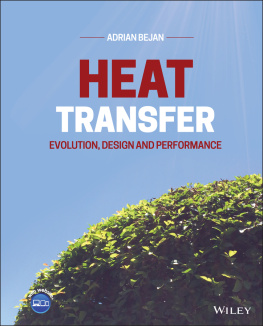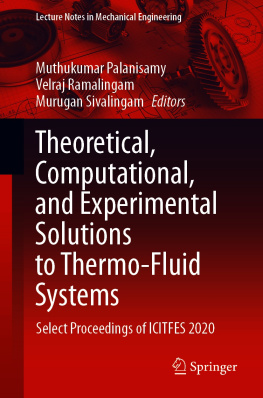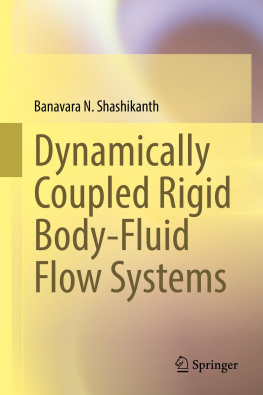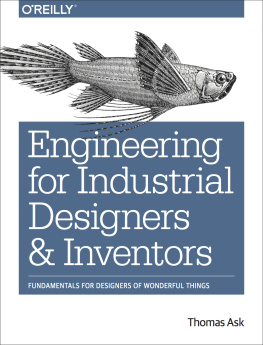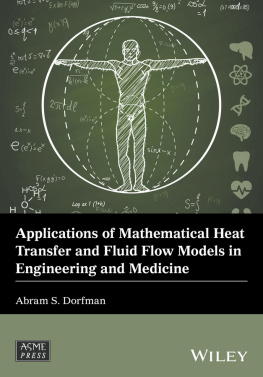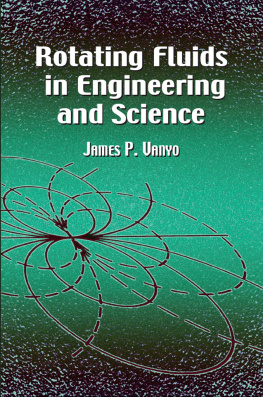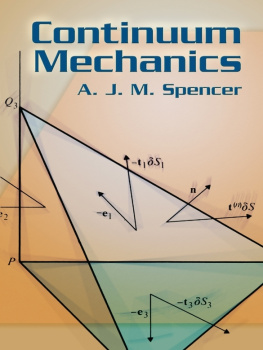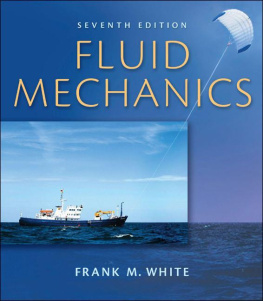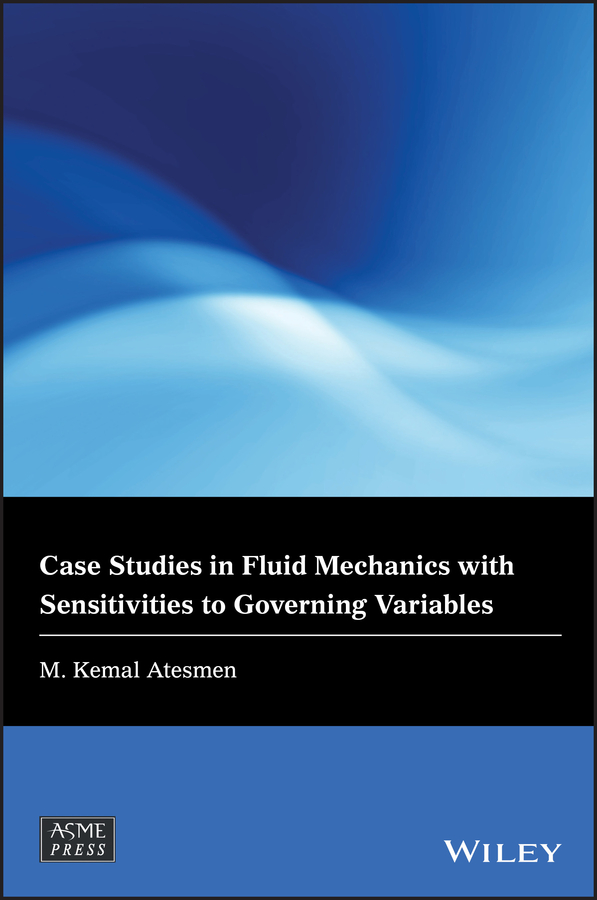
Table of Contents
List of Tables
- Chapter 04
- Chapter 05
- Chapter 06
- Chapter 14
- Chapter 16
- Chapter 21
List of Illustrations
- Chapter 01
- Chapter 02
- Chapter 03
- Chapter 04
- Chapter 05
- Chapter 06
- Chapter 07
- Chapter 08
- Chapter 09
- Chapter 10
- Chapter 11
- Chapter 12
- Chapter 13
- Chapter 14
- Chapter 15
- Chapter 16
- Chapter 17
- Chapter 18
- Chapter 19
- Chapter 20
- Chapter 21
- Chapter 22
- Chapter 23
- Chapter 24
Guide
Pages
WileyASME Press Series List
| Case Studies in Fluid Mechanics with Sensitivities to Governing Variables | Atesmen | December 2018 |
| Dynamics of Particles and Rigid Bodies A SelfLearning Approach | Daqaq | July 2018 |
| Robust Adaptive Control for FractionalOrder Systems with Disturbance and Saturation | Shi | November 2017 |
| Stress in ASME Pressure Vessels, Boilers, and Nuclear Components | Jawad | October 2017 |
| Robot Manipulator Redundancy Resolution | Zhang | October 2017 |
| Applications of Mathematical Heat Transfer and Fluid Flow Models in Engineering and Medicine | Dorfman | February 2017 |
| Combined Cooling, Heating, and Power Systems | Shi | January 2017 |
| Bioprocessing Piping and Equipment Design: A Companion Guide for the ASME BPE Standard | Huitt | December 2016 |
| Modeling, Model Validation, and Enabling Design of Experiments Stress in ASME Pressure Vessels | Jawad | November 2016 |
| Nonlinear Regression Modeling for Engineering Applications | Rhinehart | September 2016 |
| Fundamentals of Mechanical Vibrations | Cai | May 2016 |
| Introduction to Dynamics and Control of Mechanical Engineering Systems | To | March 2016 |
Case Studies in Fluid Mechanics with Sensitivities to Governing Variables
M. Kemal Atesmen
Copyright
2019 John Wiley & Sons Ltd
This Work is a copublication between John Wiley & Sons Ltd and ASME Press
All rights reserved. No part of this publication may be reproduced, stored in a retrieval system, or transmitted, in any form or by any means, electronic, mechanical, photocopying, recording or otherwise, except as permitted by law. Advice on how to obtain permission to reuse material from this title is available at http://www.wiley.com/go/permissions.
The right of M. Kemal Atesmen to be identified as the author of this work has been asserted in accordance with law.
Registered Offices
John Wiley & Sons, Inc., 111 River Street, Hoboken, NJ 07030, USA
John Wiley & Sons Ltd, The Atrium, Southern Gate, Chichester, West Sussex, PO19 8SQ, UK
Editorial Office
The Atrium, Southern Gate, Chichester, West Sussex, PO19 8SQ, UK
For details of our global editorial offices, customer services, and more information about Wiley products visit us at www.wiley.com.
Wiley also publishes its books in a variety of electronic formats and by printondemand. Some content that appears in standard print versions of this book may not be available in other formats.
Limit of Liability/Disclaimer of Warranty
While the publisher and authors have used their best efforts in preparing this work, they make no representations or warranties with respect to the accuracy or completeness of the contents of this work and specifically disclaim all warranties, including without limitation any implied warranties of merchantability or fitness for a particular purpose. No warranty may be created or extended by sales representatives, written sales materials or promotional statements for this work. The fact that an organization, website, or product is referred to in this work as a citation and/or potential source of further information does not mean that the publisher and authors endorse the information or services the organization, website, or product may provide or recommendations it may make. This work is sold with the understanding that the publisher is not engaged in rendering professional services. The advice and strategies contained herein may not be suitable for your situation. You should consult with a specialist where appropriate. Further, readers should be aware that websites listed in this work may have changed or disappeared between when this work was written and when it is read. Neither the publisher nor authors shall be liable for any loss of profit or any other commercial damages, including but not limited to special, incidental, consequential, or other damages.
Library of Congress CataloginginPublication Data
Names: Atesmen, M. Kemal, author.
Title: Case studies in fluid mechanics with sensitivities to governing
variables / Dr. M. Kemal Atesmen.
Description: Hoboken, NJ : Wiley, 2019. | Series: The Wiley-ASME Press series
in mechanical engineering | Includes bibliographical references and index.
| Identifiers: LCCN 2018038907 (print) | LCCN 2018039274 (ebook) | ISBN
9781119524717 (Adobe PDF) | ISBN 9781119524878 (ePub) | ISBN 9781119524786
(pbk.)
Subjects: LCSH: Fluid mechanics-Case studies.
Classification: LCC TA357.3 (ebook) | LCC TA357.3 .A84 2019 (print) | DDC
620.1/06dc23
LC record available at https://lccn.loc.gov/2018038907
Cover Design: Wiley
Cover Image: matdesign24/iStockphoto
Series Preface
The WileyASME Press Series in Mechanical Engineering brings together two established leaders in mechanical engineering publishing to deliver highquality, peerreviewed books covering topics of current interest to engineers and researchers worldwide. The series publishes across the breadth of mechanical engineering, comprising research, design and development, and manufacturing. It includes monographs, references, and course texts. Prospective topics include emerging and advanced technologies in engineering design, computeraided design, energy conversion and resources, heat transfer, manufacturing and processing, systems and devices, renewable energy, robotics, and biotechnology.
Preface
I have been fascinated by thermoscience fields from childhood on. Simple observations such as the motions of a flying kite, bubbles rising in a boiling kettle, a leaf floating on the surface of a lake, the force you need to get the ketchup out of its bottle, and so on encouraged me to strive to understand the science behind these and many more natural phenomena that are governed by fluid mechanics, heat transfer, and mass transfer. In college and in real engineering life, I learned that knowing only the governing equations in these vast scientific fields, and studying how they evolved and learning by heart their dependent and independent variables, was only the starting point in solving the engineering problems.
Making correct assumptions while using governing equations, using the correct thermophysical properties, and applying the right experimental results to different physical conditions are crucial in approaching the solution of problems in fluid mechanics, heat transfer, and mass transfer. I gained experience in these fields as I tackled more and more problems. Even with today's highspeed computational solutions to intricate, coupled, and nonlinear partial differential equations, you have to be experienced in the assumptions you make for governing equations and their boundary conditions, the thermophysical properties you can use, and the experimental data you apply.
Next page

